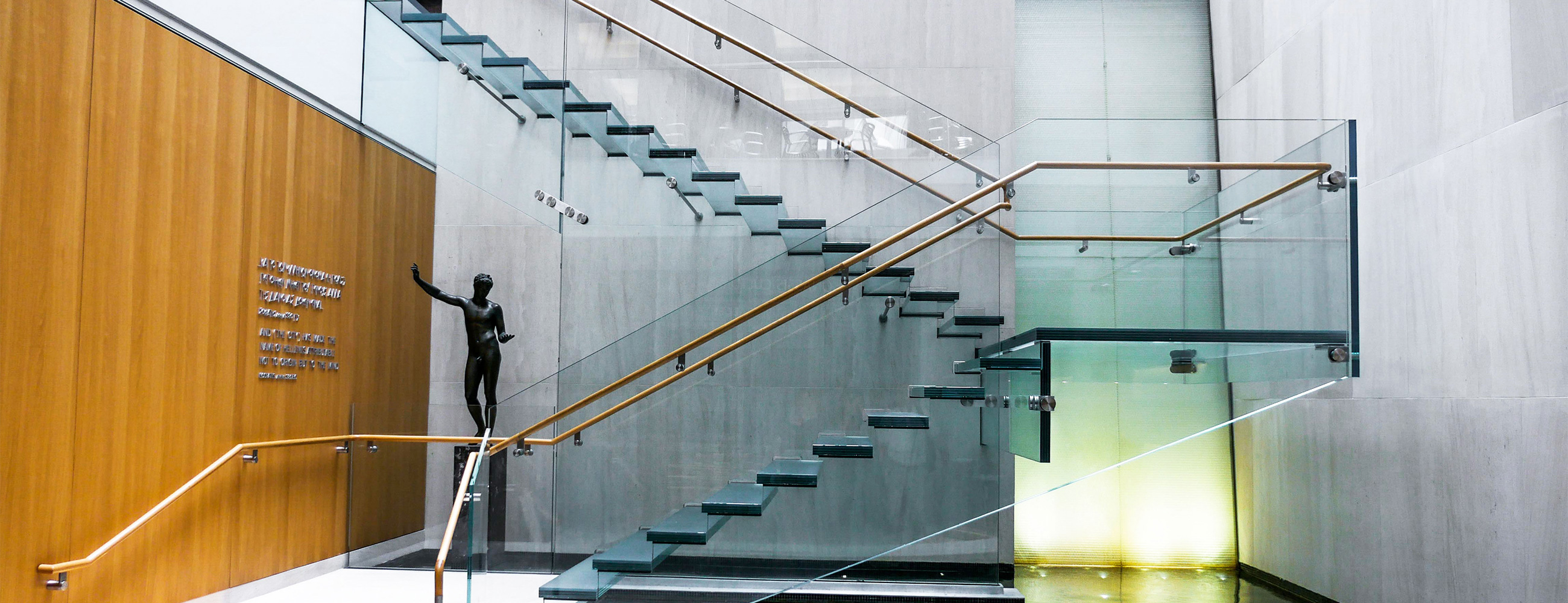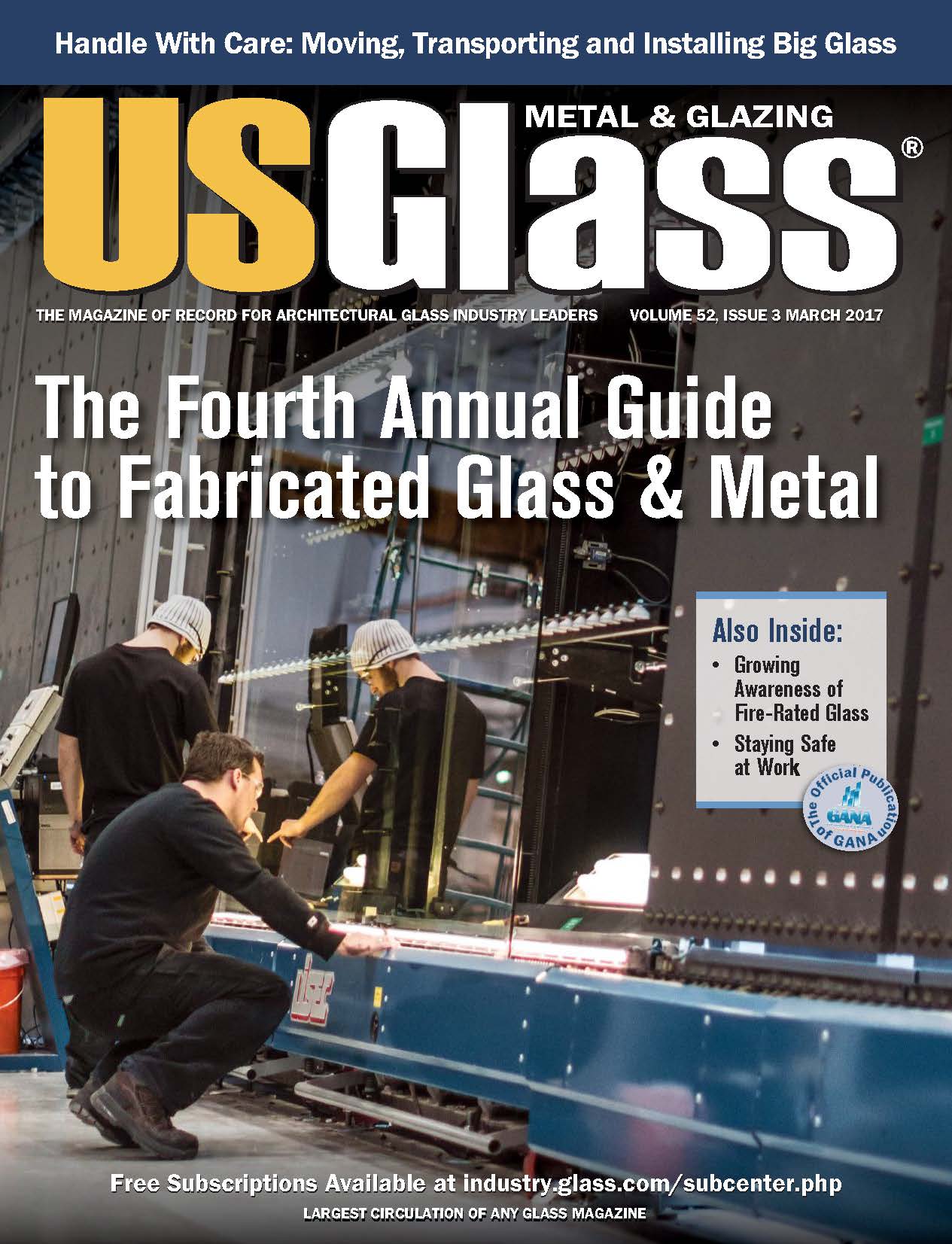USGlass’s Katherine Coig digs into how glass can help architects achieve their desired design objectives; featuring the Onassis Cultural Center’s all-glass stairs.

An engineering marvel of standing tension, this all-glass staircase is completely unsupported; cantilevered with unique fabrication, including extensive CNC edgework and 4-ply SentryGlas structural laminate.
FROM THE ARTICLE
Charged with enlarging the Onassis Cultural Center’s (OCC) gallery space at the lower level, as well as increasing its visibility from within its atrium, Nick Leahy, principal and executive director of the architectural firm Perkins Eastman, turned to glass to meet those needs. The OCC now boasts an all-glass structural staircase made from Walker Textures anti-slip 12-mm Starphire glass, which was fabricated by AGNORA. The anti-slip pattern is acid- etched into the surface, making it more durable compared to other patterns that can be applied to glass. The product was selected for traction and resistance to surface contamination.
The middle landing is completely unsupported and cantilevered. The vertical stringers are a unique fabrication of 4-ply, SGP-SentryGlas structural laminate. One end of the “tabbed”treads are supported by “mail box slots” in the middle wall. The largest and most complex section of the staircase is the central wall, which measures 115 by 175 inches and uses 4-ply ½-inch-thick Starphire heat-treated, low-iron, clear glass. The central wall alone weighs 2,500 pounds. The thickness and weight of the glass were critical. All vertical load-bearing parts of the staircase are comprised of either 3- or 4-ply heat-treated 12-mm thick glass, and all horizontal components are annealed. The staircase treads are 4-ply, and the landing is all 5-ply glass.
AGNORA worked closely with two engineering partners on the project, Michael Ludvik Engineering, the design engineer, and Eckersley O’Callaghan, the review and installation engineer. The companies performed a number of critical structural engineering calculations on the glass staircase, including tests to verify if the resistance of the annealed treads met specific ASTM requirements. The staircase also had to meet New York City building performance code regulations, which provided specifications on aspects such as the height of the glass balustrades and the distance
between the handrails and treads.
Learn more about the Onassis stairs here.



